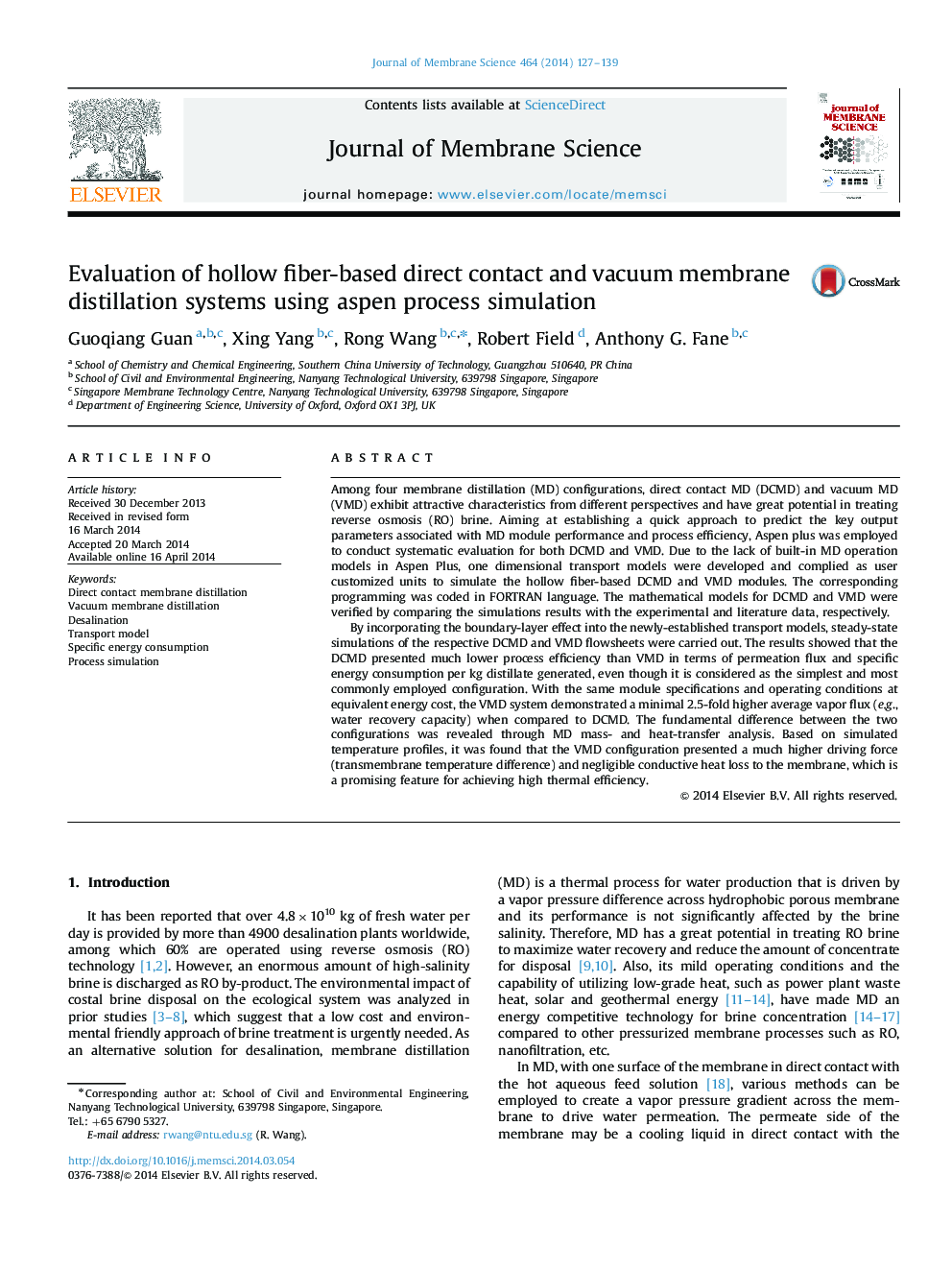| کد مقاله | کد نشریه | سال انتشار | مقاله انگلیسی | نسخه تمام متن |
|---|---|---|---|---|
| 633541 | 1456035 | 2014 | 13 صفحه PDF | دانلود رایگان |
• Aspen plus was employed to conduct systematic evaluation for both DCMD and VMD.
• Transport models were developed as user customized units to simulate DCMD and VMD.
• The results showed the DCMD presented much lower process efficiency than VMD.
• The VMD system exhibits a minimal 2.5-fold higher average vapor flux than DCMD.
Among four membrane distillation (MD) configurations, direct contact MD (DCMD) and vacuum MD (VMD) exhibit attractive characteristics from different perspectives and have great potential in treating reverse osmosis (RO) brine. Aiming at establishing a quick approach to predict the key output parameters associated with MD module performance and process efficiency, Aspen plus was employed to conduct systematic evaluation for both DCMD and VMD. Due to the lack of built-in MD operation models in Aspen Plus, one dimensional transport models were developed and complied as user customized units to simulate the hollow fiber-based DCMD and VMD modules. The corresponding programming was coded in FORTRAN language. The mathematical models for DCMD and VMD were verified by comparing the simulations results with the experimental and literature data, respectively.By incorporating the boundary-layer effect into the newly-established transport models, steady-state simulations of the respective DCMD and VMD flowsheets were carried out. The results showed that the DCMD presented much lower process efficiency than VMD in terms of permeation flux and specific energy consumption per kg distillate generated, even though it is considered as the simplest and most commonly employed configuration. With the same module specifications and operating conditions at equivalent energy cost, the VMD system demonstrated a minimal 2.5-fold higher average vapor flux (e.g., water recovery capacity) when compared to DCMD. The fundamental difference between the two configurations was revealed through MD mass- and heat-transfer analysis. Based on simulated temperature profiles, it was found that the VMD configuration presented a much higher driving force (transmembrane temperature difference) and negligible conductive heat loss to the membrane, which is a promising feature for achieving high thermal efficiency.
Journal: Journal of Membrane Science - Volume 464, 15 August 2014, Pages 127–139
